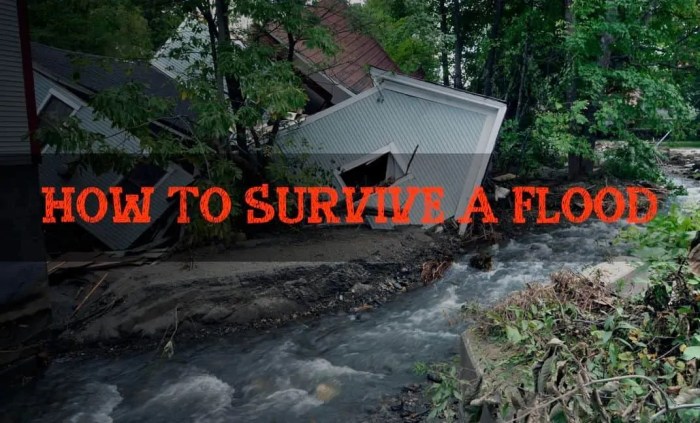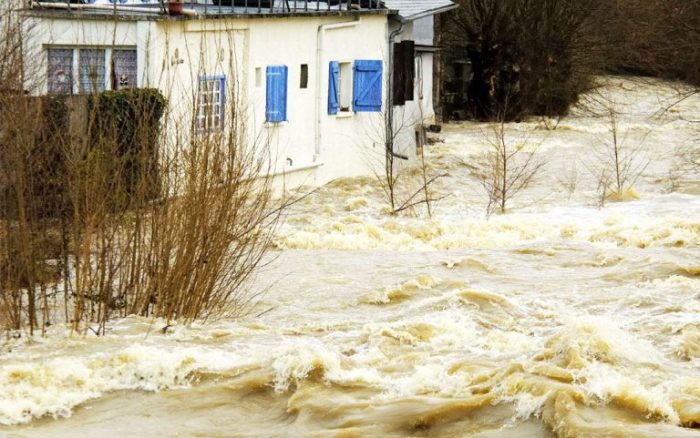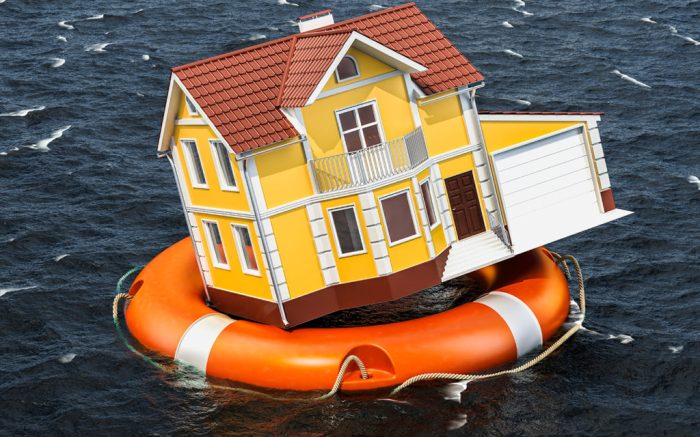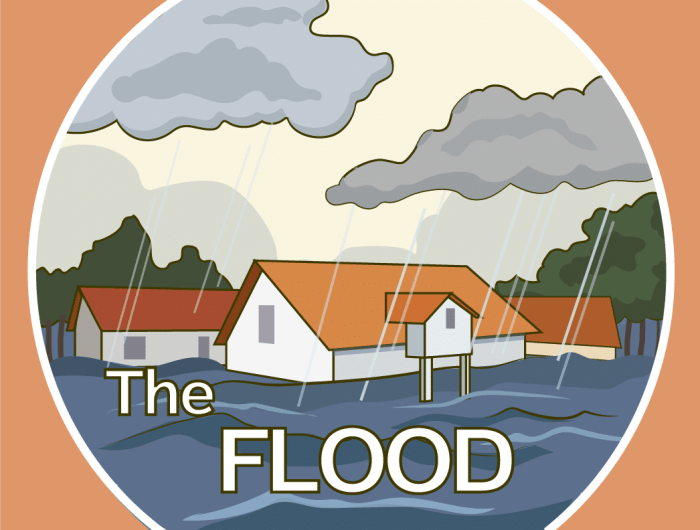How to Survive a Flood provides crucial insights on navigating through one of nature’s most dangerous disasters. From understanding the causes to practical tips for preparation and recovery, this guide is a must-read for anyone living in flood-prone areas.
Exploring the different types of floods and the impact they have on communities and the environment, this comprehensive resource equips you with the knowledge needed to stay safe and secure during challenging times.
Understanding Floods

Floods are natural disasters that occur when there is an overflow of water onto land that is usually dry. There are several factors that can cause floods, including heavy rainfall, snowmelt, storm surges, and the overflow of rivers or dams.
Types of Floods
- Flash Floods: These are sudden and intense floods that can occur within minutes or hours of heavy rainfall.
- Riverine Floods: These floods happen when rivers overflow their banks due to heavy rainfall or snowmelt.
- Coastal Floods: Coastal areas can experience flooding due to storm surges, high tides, or hurricanes.
Impact of Floods
Floods can have devastating effects on both communities and the environment. They can result in loss of life, damage to property, disruption of essential services, and contamination of water sources. Floods can also lead to soil erosion, destruction of habitats, and loss of biodiversity.
Preparing for a Flood: How To Survive A Flood

When it comes to preparing for a flood, it is crucial to have a solid plan in place to ensure the safety of your family and property. This involves creating a family emergency plan, building an emergency kit, and having flood insurance.
Creating a Family Emergency Plan
Having a family emergency plan is essential in times of crisis, such as a flood. Make sure to:
- Identify evacuation routes and safe meeting points.
- Assign tasks to each family member to ensure everyone knows what to do.
- Include important contacts like emergency services, relatives, and neighbors.
- Practice the plan with drills to ensure everyone is familiar with the procedures.
Building an Emergency Kit, How to Survive a Flood
Putting together an emergency kit can make a huge difference during a flood. Remember to:
- Include essential items like water, non-perishable food, medications, and a first aid kit.
- Pack important documents like identification, insurance policies, and medical records in a waterproof container.
- Add items like flashlights, batteries, blankets, and clothing to stay safe and comfortable.
- Rotate supplies regularly to ensure everything is up to date and in working condition.
The Importance of Having Flood Insurance
Flood insurance is a crucial safeguard against the financial devastation caused by floods. Here’s why it’s important:
- Regular homeowner’s insurance usually does not cover flood damage, so a separate flood insurance policy is necessary.
- Flood insurance can help cover the cost of repairs, replacements, and rebuilding after a flood.
- Having flood insurance can provide peace of mind knowing that you are financially protected in the event of a flood.
- It is important to review and update your policy regularly to ensure it meets your current needs and property value.
During a Flood

When a flood occurs, it is crucial to prioritize your safety above all else. Here are some steps to follow to stay safe during a flood:
Safety Measures
- Seek higher ground immediately to avoid being swept away by the rising waters.
- Avoid walking or driving through floodwaters as they may be deeper or faster-moving than they appear.
- Do not attempt to swim or play in floodwaters as they can be contaminated and pose health risks.
- Stay informed by listening to weather updates on a battery-powered radio or smartphone for any evacuation orders or emergency alerts.
What to Do if Caught in a Flood
- If caught in a flood, climb to the highest point possible and call for help.
- Do not enter attics or crawl spaces to seek shelter as you may become trapped.
- If the water is rising inside a building, seek refuge on the roof and signal for help with a flashlight or bright clothing.
Evacuation Procedures and Routes
- Follow evacuation orders issued by local authorities and evacuate immediately if instructed to do so.
- Know the designated evacuation routes in your area and have a plan in place to reach safety.
- Take important documents, medications, and emergency supplies with you when evacuating.
- Do not delay evacuation, as floodwaters can rise rapidly and endanger your life.
After a Flood

After a flood, it is crucial to carefully assess and document the damage caused by the water. This documentation will be essential for insurance claims and any future assistance you may require. Take photographs and videos of the affected areas before starting the cleanup process to have visual evidence of the destruction.
Assessing and Documenting Flood Damage
Before you begin cleaning up, assess the extent of the damage caused by the flood. Check for structural damage to your property, such as cracks in the foundation or walls. Make a list of damaged items, including furniture, appliances, and personal belongings. Take detailed notes and photographs of the destruction to provide evidence for insurance purposes.
Cleaning Up After a Flood
Once you have documented the damage, it’s time to start cleaning up. Wear protective gear such as gloves, boots, and masks to avoid coming into contact with contaminated water and debris. Remove water and mud from your home using pumps, wet-dry vacuums, and mops. Discard any items that cannot be salvaged, such as soaked carpets, insulation, and furniture.
Returning Home Safely
Before returning to your home after a flood, ensure that local authorities have declared it safe to do so. Inspect the building for any signs of structural damage or hazards before entering. Be cautious of electrical hazards, gas leaks, and mold growth. Consider hiring professionals to help with the cleanup and restoration process to ensure your safety and the thorough removal of contaminants.
Last Recap

In conclusion, knowing how to Survive a Flood is not just about surviving the event itself, but also about successfully recovering in its aftermath. By following the Artikeld steps and staying informed, you can better protect yourself and your loved ones in times of crisis. Stay safe and be prepared.